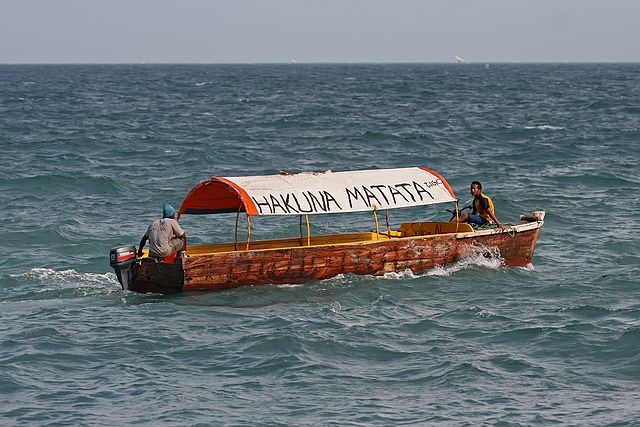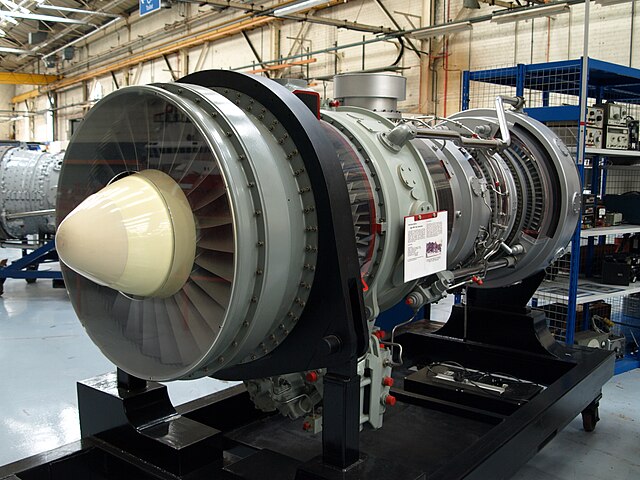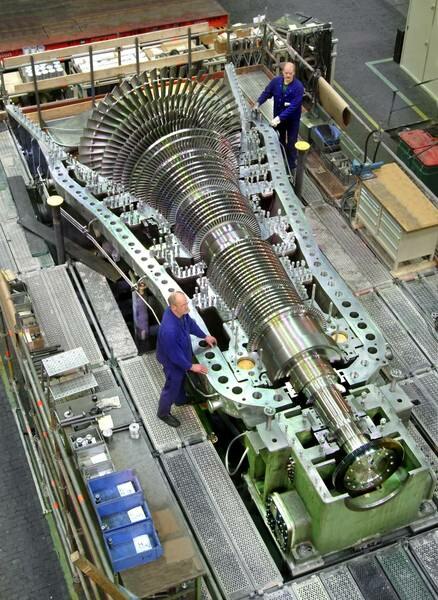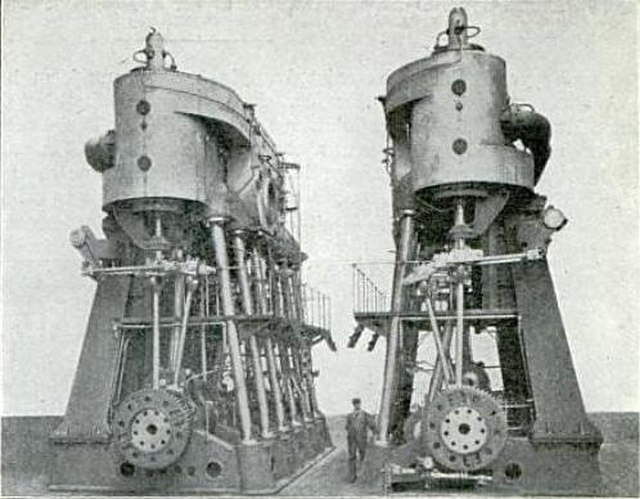An outboard motor is a propulsion system for boats, consisting of a self-contained unit that includes engine, gearbox and propeller or jet drive, designed to be affixed to the outside of the transom. They are the most common motorised method of propelling small watercraft. As well as providing propulsion, outboards provide steering control, as they are designed to pivot over their mountings and thus control the direction of thrust. The skeg also acts as a rudder when the engine is not running. Unlike inboard motors, outboard motors can be easily removed for storage or repairs.
Bolinder's two-cylinder Trim outboard engine
A Mercury Marine 50 hp outboard engine, circa 1980 to 1983
1979 Evinrude 70 hp outboard, cowling and air silencer removed, exposing its shift/throttle/spark advance linkages, flywheel, and three carburetors
A motorboat with an outboard motor attached to it
Marine propulsion is the mechanism or system used to generate thrust to move a watercraft through water. While paddles and sails are still used on some smaller boats, most modern ships are propelled by mechanical systems consisting of an electric motor or internal combustion engine driving a propeller, or less frequently, in pump-jets, an impeller. Marine engineering is the discipline concerned with the engineering design process of marine propulsion systems.
Rolls-Royce Marine Spey, a gas turbine developed by Rolls-Royce Holdings in the 1960s for marine propulsion.
V12 marine diesel engines
A marine steam turbine manufactured by MAN Energy Solutions
Marine steam reciprocating engines, ca. 1905








